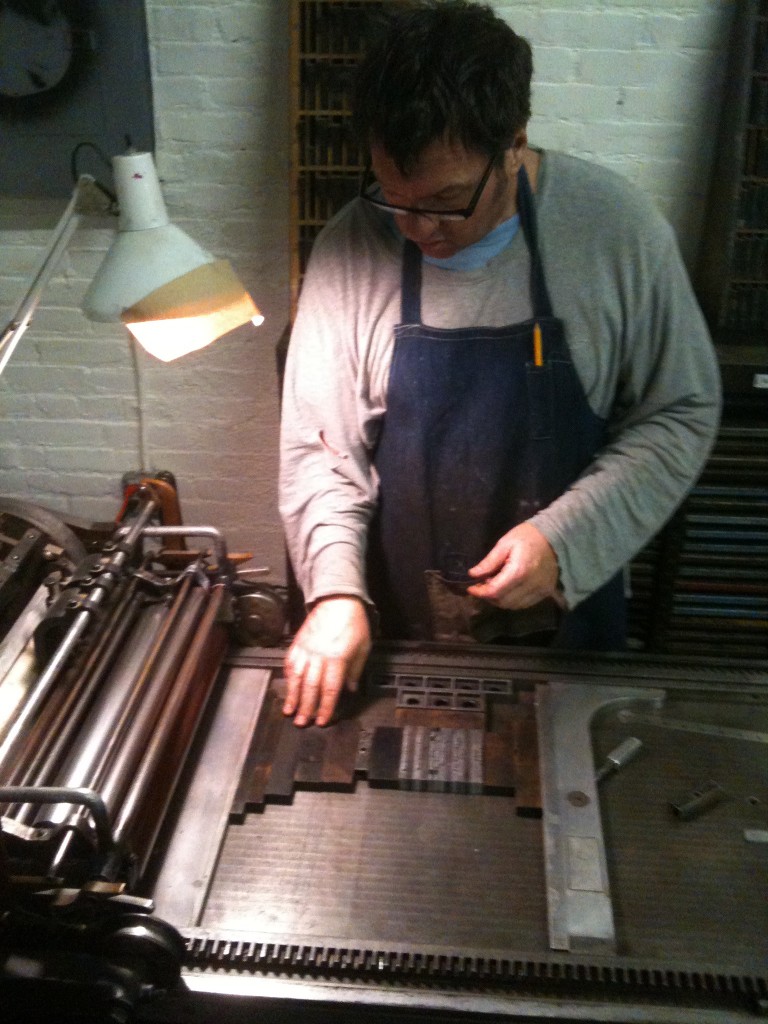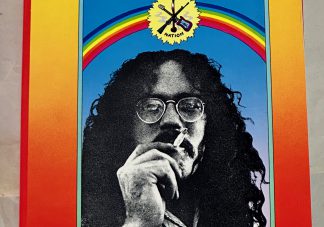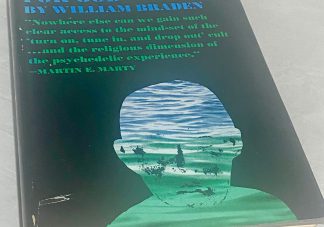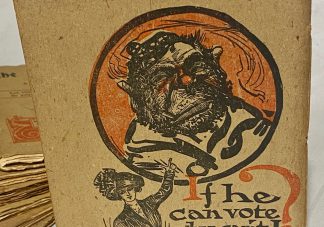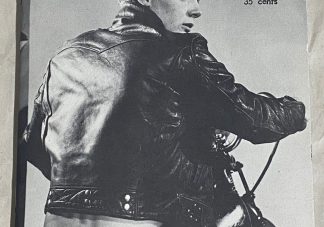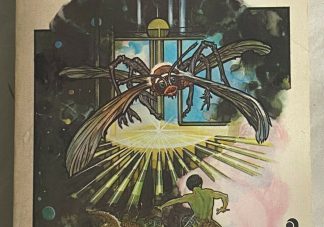I can’t believe it’s been 7 years since Chris Offutt’s A Dog & His Boy was published. Mr. Offutt’s story was published in a very small run of fifty copies; I don’t think we need to say it was over-sold upon publication. There were also six author copies that weren’t mentioned on the colophon, and a very small number of “overs” — five to be exact. They’re marked “out of series”.
I always thought I would going to write something about my experiences with Mr. Offutt; who knows…maybe I will.
The book was letterpress printed: Baskerville Roman was the font face for the text of the story; Goudy Bold and Goudy Handtooled were used for the cover and title page. The actual book work started in the fall of 1999, and we went to print in December of that year.
The story was printed on Somerset Text. I love that paper and will use it again. Two different endpapers were used, but I don’t recall what they were. I pretty sure Banana Mash was one, and I want to say Thai Grass was the other. To make matters worse, either Banana Mash or Thai Grass were used only for the author’s copies. I just don’t know which got which. Rives Arches was the cover stock we used. It looks pretty, but it’s a bitch to print with.
Kathy Sheehan provided linoleum cuts for the illustrations. She was in the MFA program at Arizona State University at the time, studying printmaking. Kathy carved four illustrations: two illustrations of a school bus, one coming towards the reader, the other leaving. The bus is the first and last illustration of the book, and the image — coming and going — provides a very nice book-end effect. There are two red feet, as well as one of the main characters in the story, The Dog.
The Offutt collectors that were on our mailing list secured a copy of A Dog & His Boy for the publication price of $75. Once upon a time, Joseph The Provider had one listed for $250, but he sold it.
And I don’t have any more.





